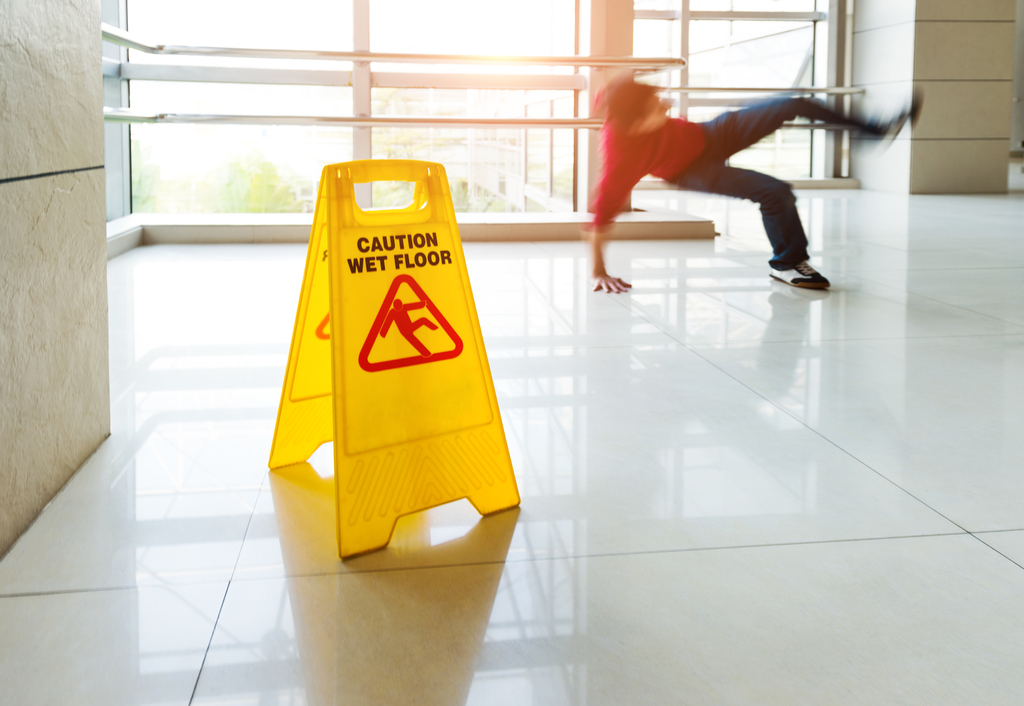
Kelly Rose
Editor

Kelly Rose
Editor
Slips and trips are the most common reported injury in the workplace. Kevin Bridges takes a look at British Safety Council (BSC) guidance to avoid this hazard.
SLIPS, TRIPS and falls on the same level continue to account for the vast majority of non fatal injuries to employees according to the latest data published by the Health and Safety Executive in Great Britain (HSE). They are also the most common reported injury to members of the public in workplaces, sites and other locations the public have access to, for example hospitals, shops and restaurants.
According to the HSE some 33% of non fatal injuries were caused by slips or trips in 2020/21, more than the combined injuries caused by lifting/carrying or being struck by a moving object, and up from the previous year’s 29%, although Covid-19 lockdowns will undoubtedly have had an affect on previous figures. Accounting for over 16,000 of the 51,211 non-fatal injuries to employees formally reported by employers to the enforcing authorities in 2020/21, in line with the RIDDOR workplace injury and ill health reporting rules, the HSE has also warned that slips and trips on average cause 40 per cent of all reported major injuries to employees in Great Britain.
The consequences of workplace slips and trips should not be under estimated. Although most will happily have no long term effects, with perhaps some temporary soreness only, serious injury and long term disability can and do result.
Under the Health and Safety at Work Act 1974 (HSWA), employers are required to ensure, so far as is reasonably practicable, the health and safety of their employees and anyone else who could be affected by their work activities, such as members of the public visiting the workplace or site. This includes taking all reasonably practicable measures to eliminate or adequately control the risk of slips and trips that could result in an injury or a case of ill health. The 1992 Workplace (Health, Safety and Welfare) Regulations place a number of duties on employers designed to ensure they provide a good standard of health, safety and welfare in and around the workplace. These include various requirements aimed at eliminating or reducing the risk of slip and trip injuries; for example, floors and pedestrian and vehicle traffic routes in the workplace must be of a suitable and sound construction and kept in good condition. The Management of Health and Safety at Work Regulations 1999 build on existing requirements by requiring employers to undertake risk assessments and put in place suitable mitigation measures in response.
Guidance on how to identify slipping and tripping hazards and take steps to eliminate or reduce the associated risks is available from the HSE and an Approved Code of Practice on the Workplace Regulations also contains a variety of recommendations and guidance on ways of preventing slips and trips.
Earlier this month (September) the British Safety Council pulled together the available law and guidance on slips and trips in its publication Preventing slips and trips - a guide to preventing slip and trip accidents at work (the BSC guidance). The BSC guidance contains a summary of employers’ obligations to reduce the risks of slips and trips, a useful reminder of the most common risks and practical advice on the steps they can take to eliminate or reduce that risk.
Employers should take note of its words – the recent HSE statistics will be used by the HSE to inform its inspectors. With many such accidents easily avoidable they are unlikely to be slow in spotting failures in this respect. Particular care should be taken to ensure workers, including specialist staff, for example cleaners, are given suitable information, training and supervision so that they fully appreciate their role in preventing slips and trips. Such simple steps may well prevent not only unnecessary physical pain and suffering for the injured party and lost work days to recover but also reputational and financial damage for the employer.
Kevin Bridges is a partner and head of health and safety at Pinsent Masons. For more information, visit www.pinsentmasons.com


Colmore Circus Queensway
Birmingham
B4 6BH
UNITED KINGDOM
0121 260 4005